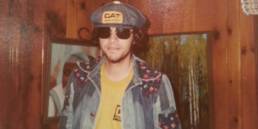
Anyone following the listing giant we call California might have noticed that the Chicken Littles have once again hoarded the microphones for their narrative of downsized expectations.
Except for taxes and pensions, few subjects leave them as screechy as the bottomless environmental ethic they blame for pushing demoralized residents out of state in search of common sense, not taxes on supermarket plastic bags.
How can Governor Jerry Brown support a billion-dollar blueprint to lop emissions of greenhouse gases while foreclosure ghost towns sink California cities such as Stockton and San Bernardino, naysayers ask? Why is Brown, whose quixotic liberalism won him the Governor Moonbeam moniker during his first stint in office in the 1970s, suing to curb sprawl when thestate unemployment rate is near 11 percent and the budget gap is $16 billion?
Because, they hypothesize, a future with social engineering that favors a low-polluting, electric-car lifestyle over lunch- pail jobs is Brown’s naked agenda. Because bellwether stewardship of reasonable protections for clean air and water a generation ago have transmogrified today into policy zealotry about to collapse under its own biodegradable hubris. Beyond Facebook andGoogle (GOOG), the West Coast spirit of innovation is withering. A business climate that once nourished oil giants, defense juggernauts, agribusiness and the country’s smartest entrepreneurs has died off faster than dial-up. Look at the latest population numbers showing that since 1980 four million more people have left California than have come in from other states.
Fighting Smog
This story line of a Green Hulk run amok in a state whose economy is in the top-10 in the world would be essential reading, an SOS even, if only our past didn’t trample it.
In 1955, a dozen years into the Los Angeles campaign to eradicate eye-watering smog, air pollution generals realized they needed an emergency plan in case ozone and other airborne poisons approached life-strangling levels. (A year before, a frighteningly thick haze led officials to seal the harbor, redirect planes from the airport and deploy the California Highway Patrol in case of evacuation.)
Industrialists, embittered by years of being scapegoated for pollution that mainly puffed from cars, revolted against this crisis planning, including a last-gasp contingency that they idle their plants for days to let the atmosphere cleanse itself.
An executive of Richfield Oil Co. announced that its refinery would only halt operations on written orders from the Air Pollution Control District. If the shutdown was later found to have been overkill, Richfield expected the district to write it a check for lost income.
Hollywood, meantime, desired a return of blue skies for its backdrops. The chemical air was costing showbiz millions. “Every morning before we leave the studio we say a few Indian prayers that the smog will have blown away,” said an actor in the Western drama “Brave Eagle,” filmed in the San Fernando Valley in the mid-1950s.
So they all vamoosed, right, showbiz and Big Oil, to Seattle or Phoenix or Kansas City, where breathing wasn’t painful and where regulations were relatively pain-free? No! In the murky 1950s, roughly 100 polluting industries a year relocated to Southern California. Behind them caravans of family station wagons entered the state, with occupants dreaming of jobs. By the time of the first Earth Day in 1971, with every car, truck and smokestack in California under the sternest regulations on the planet, the populace had doubled, to 20 million, since 1950.
Voter Support
The defense companies, whose many smokestacks and machines disgorged any number of scary chemicals, remained as well. Fine- print-loving bureaucrats didn’t crush their business. Superpower peace eventually did much of that.
Today, 40 million souls live in California, not all of them heel-clicking, but few packing their suitcases with green- migraine syndrome, either. Even during the Great Recession, when manufacturing swooned, Californians trounced by an edge of 2 to 1 a 2010 ballot initiative to delay the state’s global warming law until the jobless rate dropped.
This is not to suggest that all companies adore inspections, permitting and fees, or are embracing carbon markets. But CEOs certainly know, if only in the abstract, that the estimated $28 billion in health costs from dirty air would explode to gargantuan levels without rules on the books. That’s why they are CEOs, not window-washers.
No, the trouble isn’t the existing green ethic. Only about 50,000 out of more than 7 million homes in the state have solar panels. The problem is a lack of leadership imagination. Brown & Co., for all their gallant intentions, have yet to inspire Californians by connecting environmental problems with what could be a rejuvenating, self-sustaining economy that electrifies California cleanly while shopping its products to an energy-parched globe.
At a speech to 200 energy experts at University of California, Los Angeles, last summer, Brown floated a goal of the state creating enough clean local energy to support 3 million homes. Developing those 12 gigawatts is “going to take all manner of investment, risk taking and collaboration,” he said. Some idea of collaboration! Instead of chin-wagging inside a university lecture hall, Brown should park a Prius in front of small-business leaders and just about anybody he can buttonhole, to solicit their ideas.
About 430,000 Californians, or roughly 4 percent of wage- earners here, work in clean-energy production, new-generation batteries, recycling and green education. Brown should be hollering that we must do better.
In Perspective
Yet, too often, the skeptics are doing the talking about our eco-obsessions as if they were the indulgences of an insufferable diva. Remember Solyndra, the solar-panel maker that went belly up, despite a half-billion dollars in federal support? Tell me which is more vital for our national security: public investments to harness solar rays in a world bloodied by oil, or the Air Force’s F-22 Raptor project, where each jet fighter is estimated to be $269 million over budget, meaning that overspending on two of them exceeds the taxpayer loss for Solyndra?
Just as the state once engineered carbon-graphite bombers during the Cold War, Brown 2.0 should man the bully pulpit to speak directly to average Californians. The UCLAs and NRG Energies and Wal-Marts of the world can book the messianic one another time.
With an honest spirit of green invention, perhaps some of those who left the state will flip a U-turn, plugging their ears to the opinionated cluckers on the drive home.
Bloomberg View link to Op-Ed




